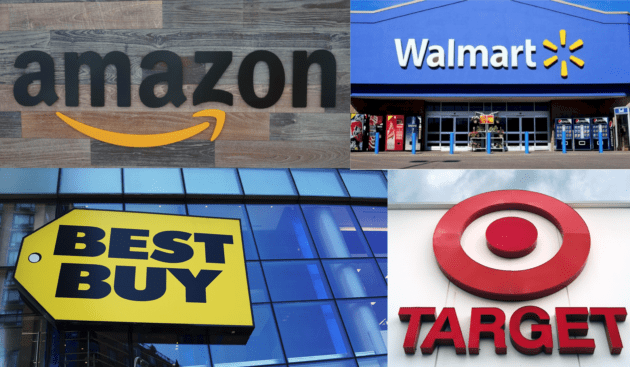Retail media has moved from an experimental concept to a core pillar of modern go-to-market strategy. Once confined to a handful of pioneering platforms, the channel now commands budgets once reserved for broadcast, search, and social. As Amazon Ads, Walmart Connect, and other major networks refine their advertising suites, businesses of every size have discovered unprecedented access to consumers at the precise moment of purchase consideration. This development signals not only a shift in media planning but a fundamental realignment of how brands capitalize on first-party data, measure performance, and secure competitive advantage.
The structural drivers behind retail media’s ascent
Three macro forces explain the channel’s rapid maturation. First, ecommerce growth has permanently expanded the digital shelf. Global retail ecommerce sales surpassed six trillion dollars in 2024 and continue to rise. Second, privacy regulations and the depreciation of third-party cookies have elevated the value of retailer data that captures real, permissioned behavioral signals. Third, advances in machine learning have enabled precise targeting and optimized bidding at scale, delivering clearer return on ad spend for marketers and higher margins for retail media owners. These forces together create a virtuous cycle in which shoppers benefit from more relevant recommendations, while advertisers enjoy measurable lift in conversion and basket size.
How platforms are professionalizing the channel
Leading retailers have invested heavily in analytics dashboards, self-service consoles, and programmatic integrations that mirror the sophistication long associated with search and display networks. Amazon’s advertising interface now includes predictive keyword tools, audience expansion modules, and daily budget pacing alerts. Walmart Connect offers granular reporting that links in-store activity to online exposure, allowing brands to map blended attribution models across physical and digital pathways. In Canada, Loblaw Media’s upgrade to real-time bidding provides marketers with same-day performance data. These upgrades lower the technical barrier to entry and position retail media as a credible alternative to legacy channels.
Opportunities for small and mid-sized brands
While Fortune 500 brands allocate substantial sums to retail media, the democratization of self-serve tools levels the playing field for smaller organisations. Sponsored product campaigns can launch with modest daily budgets, yet still benefit from high-intent audience segments. Crucially, retail media delivers what legacy display does not: proximity to purchase. When a consumer searches for gluten-free pasta on a marketplace, the sponsored listing appears adjacent to organic results, capturing consideration during the decision window. For small brands, this relevance translates into higher click-through rates and lower cost per acquisition relative to traditional top-funnel tactics.
Integrating retail media within the marketing mix
Retail media should not operate in isolation. A high-performing program works best when synchronised with owned and earned channels. Product detail pages require optimisation that mirrors the meticulous on-page tactics applied to corporate websites, including keyword-rich descriptions, authoritative images, and user-generated reviews. Social content can amplify limited-time offers that link directly to retailer checkouts, reducing friction in the customer journey. Email campaigns segmented by retailer loyalty identifiers reinforce cross-channel engagement, moving the consumer from awareness to conversion with fewer touchpoints and less waste.
Data as a strategic asset
Retailer first-party data holds unrivaled granularity, combining search history, purchase frequency, and demography. Accessing that intelligence transforms campaign planning from assumption driven to evidence based. A brand can identify geographic pockets where sales velocity lags, then deploy region-specific promotions within a single console. Hourly performance reports guide dayparting strategies that allocate budget during periods of heightened conversion probability. Off-site audience extensions allow advertisers to retarget shoppers across the open web, maintaining message continuity beyond the walled garden.
Measurement and accountability
One of retail media’s greatest advantages lies in closed-loop attribution. Because the transaction occurs within the same ecosystem that hosts the advertisement, correlation between spend and sales is immediate and verifiable. Marketers can calculate incremental return on ad spend at the SKU level, then iterate creatives and bids without the latency typical of offline media. Moreover, advanced dashboards now integrate margin contribution analysis, empowering finance teams to reconcile gross profit with media outlay in near real time. This precision fosters executive confidence and protects budgets during periods of economic uncertainty.
Mitigating common pitfalls
Despite its benefits, retail media is not immune to strategic missteps. Overreliance on branded search terms can inflate cost without expanding market share. Neglecting catalogue hygiene results in disapproved listings that never enter auction. Failure to align inventory planning with promotional cadence can trigger stockouts that waste media dollars. Best practice dictates a cross-functional steering committee in which marketing, supply chain, and finance share a unified view of performance metrics and inventory forecasts. Continuous optimisation, rather than sporadic bursts, sustains long-term efficiency.
Regulatory vigilance and ethical advertising
As retail media leverages sensitive behavioural data, compliance with privacy standards remains paramount. The Personal Information Protection and Electronic Documents Act in Canada and the California Consumer Privacy Act in the United States impose stringent consent requirements. Brands must ensure creative assets and data practices respect user preferences and provide transparent opt-out mechanisms. Ethical targeting also means avoiding exploitative tactics, such as algorithmic pricing that discriminates by zip code or demographic cohort. Responsible stewardship of data not only mitigates legal risk but fosters consumer trust.
Emerging innovations and future outlook
Voice commerce, shoppable video, and augmented reality experiences represent the next frontier of retail media engagement. Smart speakers already allow users to reorder household staples via verbal prompt, presenting opportunities for sponsored search placement in voice results. Interactive streaming platforms integrate one-click purchasing overlays within live broadcasts, collapsing discovery and conversion into a single moment. Augmented reality tools enable virtual try-ons that attach directly to marketplace product pages. As these technologies mature, the distinction between content and commerce will blur further, compelling brands to build cohesive narratives across every customer touchpoint.
Strategic recommendations
To capitalise on retail media’s trajectory, organisations should adopt a phased roadmap. Phase one focuses on foundational readiness: catalogue accuracy, keyword research, and compliance with marketplace guidelines. Phase two introduces iterative testing: dynamic creative rotation, bid adjustments driven by machine learning insights, and audience segmentation based on behavioural cohorts. Phase three scales success: expansion into multiple retailer networks, integration with demand-side platforms for off-site retargeting, and establishment of key performance indicators tied to gross margin contribution rather than topline sales alone.
Conclusion
Retail media’s evolution into a strategic priority reflects broader changes in consumer behaviour, data governance, and technology capability. By merging point-of-purchase proximity with measurable performance metrics, the channel offers a compelling proposition for enterprises seeking efficient growth. Small and mid-sized businesses in particular stand to benefit from the lowered barriers to entry, precise targeting, and closed-loop attribution that retail networks provide. Brands that invest in catalogue excellence, data-driven optimisation, and ethical stewardship will secure a durable competitive advantage in an increasingly complex digital marketplace.








